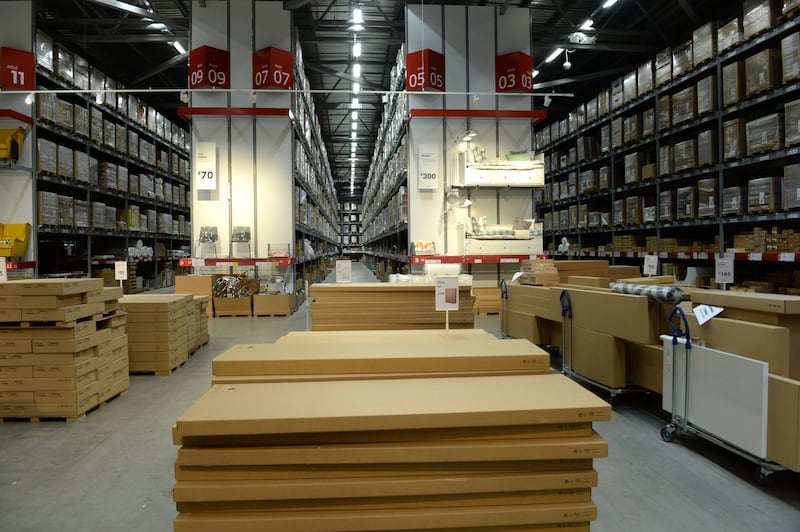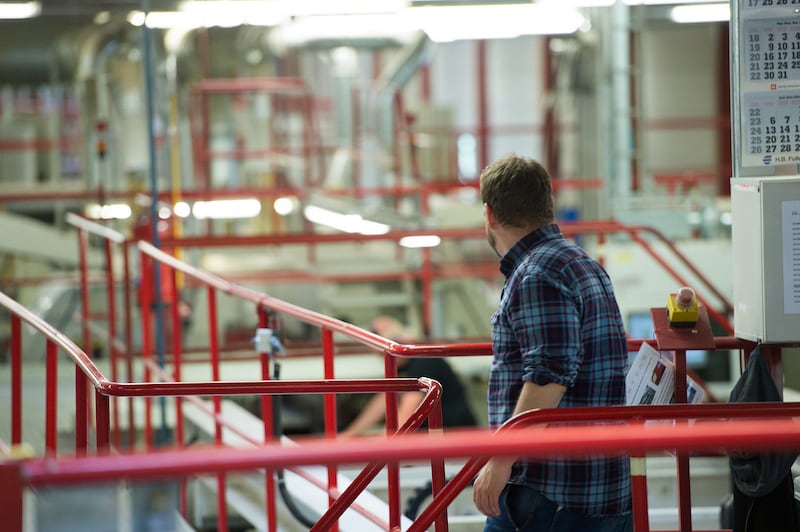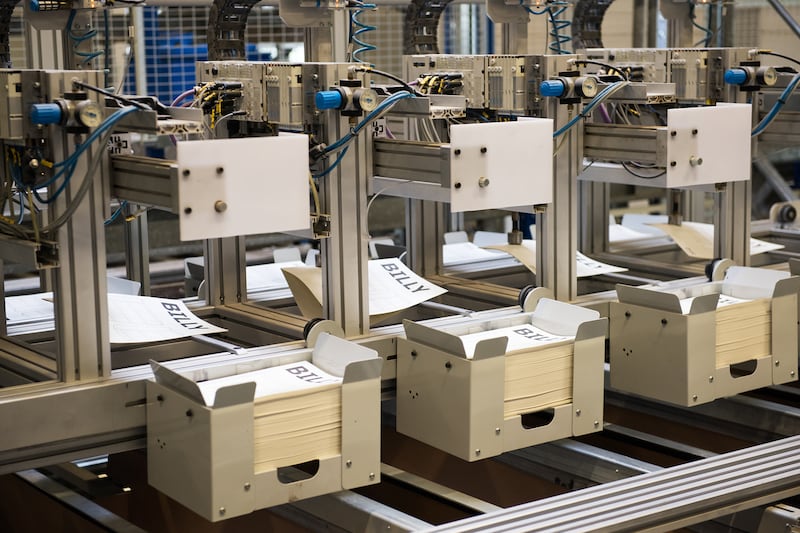As the walls close in, many of us are sprucing them up, spurred to act after hours of looking, during weeks of working from home, at the colour of our walls or the state of our sofas. Big online furniture retailers around the world have reported strong demand. Revenue has doubled at Wayfair, the US furnishings giant. Ikea has doubled down online, slapping its new slogan, "Conquer the great indoors", on desk chairs and storage solutions for tinned food.
But pandemic makeovers are tightening the focus on the toxic implications of “fast furniture”, years after the fashion industry – and its consumers – faced their own environmental reckoning. A familiar paradox lies at the heart of a business model that produces €20 bookcases and €5 T-shirts: how can you be sustainable while selling keenly priced products, largely made of natural resources and plastic, while at the same time inviting your customers constantly to upgrade them?
The Billy bookcase, an Ikea stalwart, is now made by robots at a rate of one every three seconds. Since its launch, in 1978, its price has come down by about a third
Furniture used not to be cheap – or fast. Old dressers and chests of drawers were heirlooms that we took with us as we moved and grew families. A clash of styles in our living rooms mattered less than it did in our wardrobes.
Much of what followed can be traced to a precocious Swedish entrepreneur. Ingvar Kamprad was only 17 when he founded Ikea on his uncle's kitchen table, in 1943. Fountain pens and udder balm were among his first products, but furniture soon came to dominate. Ikea opened its first showroom in a small Swedish village in 1953.
Kamprad, who died in 2018, became a marketing genius, a democratising influence on design and a flat-pack billionaire. His business model relied on volume, which kept prices down, and inexorable growth, as well as a safe, contemporary aesthetic that became known as “global functional minimalism”.

Yet that growth remained steady, for a while. "Even by 1998, when I started working for the company, we had stores in a few countries and most of the production was still in Scandinavia," says Johan Stenebo, who held senior positions at Ikea for 20 years, including a stint as its environmental director.
But Ikea, which reached Britain in 1987 and Ireland in 2007, began to look to eastern Europe and Asia for cheap resources and labour. "We did that to get the prices down and earn profit," Stenebo says. It worked. Take, as one example, the Billy bookcase, an Ikea stalwart now made by robots at a rate of one every three seconds. Since its launch, in 1978, its price has come down by about a third.
“Get the prices down and you increase sales – we created that demand, not the consumer,” says Stenebo, who quit Ikea in 2008. Disillusioned with corporate mores, he wrote Ikea: How to Become the World’s Richest Man. “That’s why I have a problem now with discussions about climate change,” he adds. “It’s corporate-driven but we always talk about consumer behaviour.”
Cheap furniture is typically made of chipboard and laminated with plastic. Recycling centres accept it, but it is complicated and costly to process. Incineration or landfill is often easier
The family dresser, passed down through generations, was a vanishing commodity in this new market, which promoted modern design. We did not need quality furniture like it anyway; the shrinking, transitory flats of generation rent could be furnished at an unthinkably low cost. Today you can buy an Ikea sofa, coffee table, TV bench, double bed and mattress, dining table with four chairs, wardrobe, bookcase and chest of drawers for less than €1,000. How much of it would you take to your next place or bother to sell?
The cost to the environment is greater. Cheap furniture is typically made of chipboard – glue-bound woodchips – and laminated with plastic. Recycling centres do accept it, but it is complicated and costly to process.
Incineration or landfill is often the easier route. A survey of 2,000 first-time buyers and renters in the UK last October revealed that one-third of people had thrown away furniture that could have been sold or donated.
And that is just the end of the cycle. It might begin with unsustainable or illegal logging, followed by energy-intensive milling and production in giant factories, the use of chemical treatments and plastics, as well as foam stuffing and metres of upholstery with its own supply chain. Then there are the emissions of global shipping.

The conservation charity WWF focused on trees in its 2016 report on furniture sold in the UK, Are You Sitting Comfortably? It found that 68 per cent of the dozens of retailers it assessed were failing to put in place robust policies for timber sourcing or communicate them to customers. Furniture worth €2 billion was being imported from “high-risk” countries where illegal logging is rife.
Furniture price wars have compelled businesses to sideline sustainability even when it seems cheap. "I remember one guy telling me that a typical sofa sold in the UK contained wood that cost about £9," Young recalls. "But if you bought it sustainably, with FSC" – Forest Stewardship Council – "certification, it would cost £10. And that's probably in a sofa that might sell for £450." But when you are selling sofas by the containerload, the small additional costs of sustainability add up.
Ikea plans to be able to take back and repurpose or recycle its own furniture at the end of its useful life – and to tweak designs to make this simpler
As the world's top furnisher, Ikea feels the pressure to act. "Sustainability is not new for us," says Malin Nordin, the head of circular development at the chain's parent company, Inter Ikea Group, which had retail sales of €41.3 billion last year. I ask Nordin how a product like Tärendö, a dining table made of plastic-coated chipboard with steel legs and plastic feet, could ever be sustainable when it costs €35. She sends me a newer document: Ikea's People & Planet Positive sustainability strategy, published in 2012. It sets out goals to, among other things, make all its products from recyclable and renewable materials by 2030.
Ikea plans to be able to take back and repurpose or recycle its own furniture at the end of its useful life – and to tweak designs to make this simpler. “We will make the needed mind shift to start seeing these products not as a single-use item, rather a material bank for the future,” Nordin explains in an email.
These are largely goals rather than widespread practices. But at least they exist. At WWF, Young praises Ikea’s commitment in the face of the greatest scrutiny, but not all retailers have the scale or pressure to invest in change. “For most companies, it’s just not part of their pitch to the customer,” she says.

An industry belatedly facing up to its environmental footprint is in experimentation mode. Demand for change is growing. "We're definitely seeing a shift in spending towards recycled, sustainable and long-lasting furniture," says Hamish Mansbridge, the chief executive of Heal's, which has sold furniture from the same London store for more than 200 years. It now sells garden furniture made from recycled ocean plastic and a sofa upholstered in fabric made from yarns salvaged from the fashion industry.
Small workshops with their own direct customers are also noticing shifting demands. "They're more interested in how things are done, rather than just something that arrives on the doorstep from a factory somewhere," says Tim Smith, who runs Create Furniture in Tottenham, in north London. His customers increasingly request work-in-progress photographs and have become more willing to invest in bespoke, handmade cabinetry.
Yet Smith acknowledges the seductive economy of faster furniture. It is easy to sell the advantage of a fitted wardrobe (starting price: £1,500). But cabinetry is relatively simple: it is boxes with doors. To hand-make a family dining table in solid wood, Smith would have to charge upwards of £4,000. “But then you might as well buy something in a shop that isn’t going to be that different for £400,” he says. “People’s desire to get nicely made stuff that is sustainable only goes so far.” – Guardian











